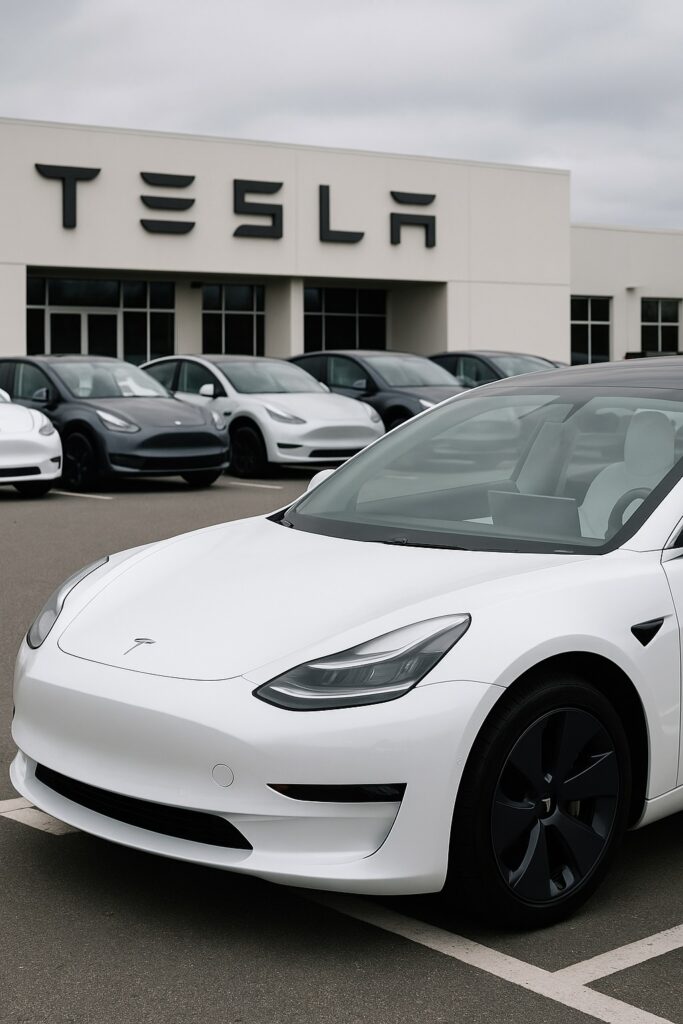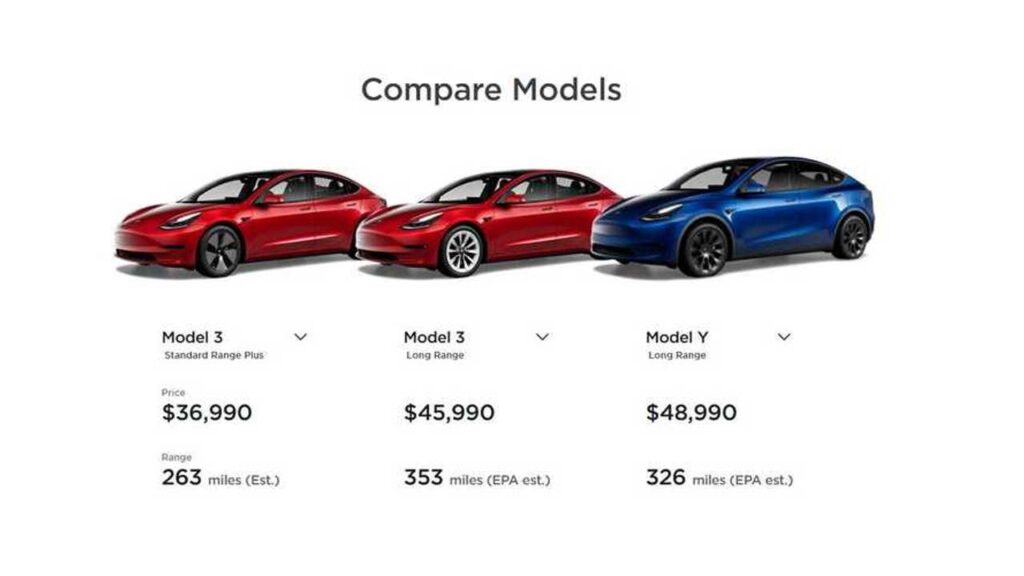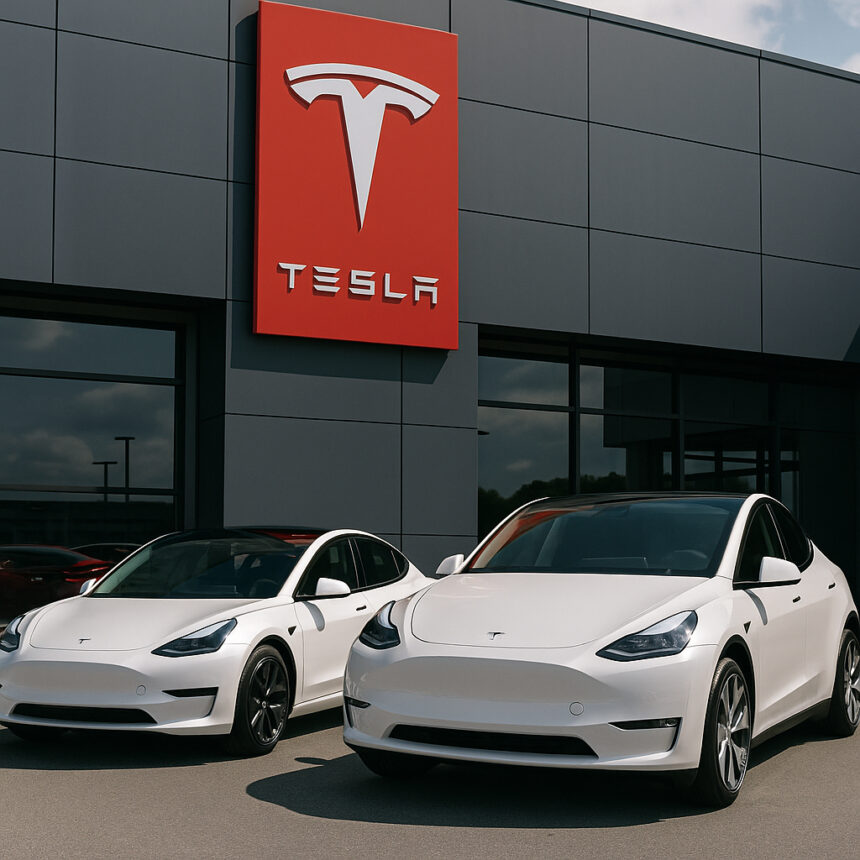Tesla has introduced the Model 3 Standard and Model Y Standard. The stripped-down versions of its best-selling electric vehicles promote affordability without losing Tesla’s signature technology. The new trims arrive at a time when the EV market meets mounting competition and slowing demand. These forces cause even the most dominant players to rethink how they price and position their cars.
What’s Happening & Why This Matters
The Model 3 Standard starts at $36,990, while the Model Y Standard begins at $39,990 — roughly $5,000 cheaper than their premium counterparts. Though the cost savings come with fewer high-end features, Tesla’s strategy reflects a deliberate recalibration. The target is reaching a greater audience while maintaining quality and brand identity.
Both vehicles still deliver Tesla’s hallmark attributes — efficient electric drivetrains, sleek minimalist interiors, and direct over-the-air software updates. Each model offers up to 321 miles (372 km) of driving range per charge. The range is still competitive in the current EV market. Tesla’s goal here is not reinvention, but refinement, as it tightens its grip on the mid-tier EV segment before competitors close in.
Tesla’s Trim Down, Turn Up

The two new trims are more accessible but not basic. Tesla has deliberately pared back luxury features such as panoramic roofs, premium sound systems, and Autosteer, the semi-autonomous driver assist tool. The interior adopts a fabric finish instead of microsuede, and certain lighting and secondary touch controls have been removed. Yet, what remains is still distinctly Tesla—clean design, responsive performance, and seamless integration with the company’s expanding digital ecosystem.
For Tesla loyalists, the changes won’t diminish the experience. Instead, these models simplify ownership. For new buyers entering the EV market, the reduced pricing represents a more attainable path into the Tesla brand. It’s a careful balance: cost reduction without diluting the brand’s perceived innovation or performance edge.
The move puts Tesla directly up against competitors like Hyundai’s Ioniq 5, Ford’s Mustang Mach-E, and Chevrolet’s Equinox EV. These all target a similar consumer segment. These vehicles emphasize practicality and price-conscious design, but Tesla’s software ecosystem and networked infrastructure give it a sustained advantage.
Price, Perception, and Pressure
Investor response to Tesla’s announcement was measured. Analysts such as Ivan Drury from Edmunds commented that while the lower-cost trims expand Tesla’s reach, they don’t represent the paradigm-shifting product the market anticipated. Tesla shares dipped slightly after the news, reflecting investor fatigue with incremental updates rather than fresh innovation.
Behind this pricing decision lies Tesla’s most pressing challenge: balancing margin preservation with market expansion. The loss of the $7,500 U.S. federal EV tax credit for certain models has impacted Tesla’s competitiveness. In parallel, BYD and other Chinese manufacturers are flooding markets with cheaper alternatives, forcing Tesla to defend its price position.

Tesla’s business model increasingly relies on software revenue. This makes these lower-cost models part of a broader funnel strategy. Buyers of the Standard trims may eventually purchase optional add-ons such as Full Self-Driving (FSD), advanced navigation, or in-car entertainment features. This provides Tesla with post-sale income that extends beyond hardware margins.
Affordability, Tesla Style
Despite the price cuts, Tesla has not reached the much-discussed $25,000 EV target that Elon Musk promised in past years. Instead, the company is testing consumer appetite for simplified versions of its existing models. This approach suggests Tesla is gauging elasticity—how much the market will bear before margins tighten too much.
Tesla’s affordability strategy can be viewed as pragmatic rather than revolutionary. Instead of launching a new budget model, it’s offering stripped-down versions that preserve brand cachet while expanding the customer base. The result: a cleaner cost structure, a broader audience, and steady production efficiencies at factories like Giga Texas and Giga Shanghai.
This isn’t just about cars — it’s about controlling the EV conversation. Tesla remains the benchmark for electric mobility, and these new models reinforce that dominance without undermining its aspirational image.
Market Context and Global Competition
Tesla’s decision comes during a volatile moment for the global EV sector. Demand growth has slowed across Europe and North America, while manufacturing costs remain high. Governments are tapering subsidies, and legacy automakers have improved both quality and range in their electric offerings. In this environment, Tesla’s pricing strategy serves as both offense and defense.
Competitors, including Volkswagen, Kia, and Nissan, are building more affordable electric models that erode Tesla’s market share. The question isn’t whether Tesla can compete on performance — it’s whether it can sustain profit margins in a market shifting toward affordability.
Still, Tesla’s advantages remain formidable. Its Supercharger network, expansive software ecosystem, and ability to update vehicles remotely keep it years ahead of competitors on user experience. Even the stripped-down versions carry these core benefits, making them appealing to drivers who value function over flash.
Tesla’s success depends on whether it maintains its technological leadership while expanding access. The new ‘Standard’ trims may be less luxurious and more survival-oriented. ‘Standard’ 3 and Y Models provide Tesla a little breathing room to stay central in the market it created.
TF Summary: What’s Next
Tesla’s new “Standard” trims are a pragmatic recalibration. Expect steady sales from new EV adopters and families who have long admired the brand but found it financially out of reach. Yet, the company’s long-term credibility depends on delivering the affordable $25,000 model its founder promised for years.
MY FORECAST: The next phase of Tesla’s growth is not driven by range or performance, but by whether it can democratize its brand without eroding its identity.
— Text-to-Speech (TTS) provided by gspeech


